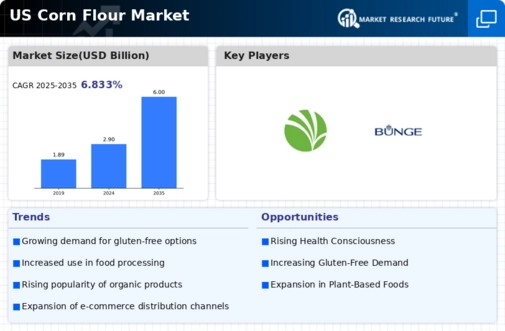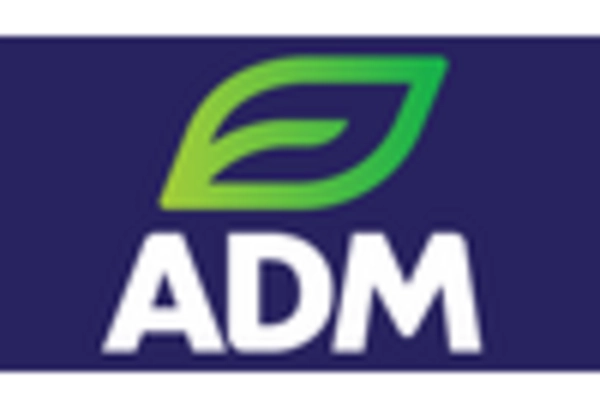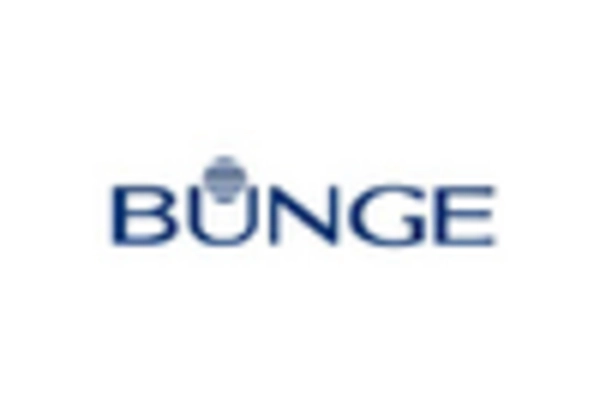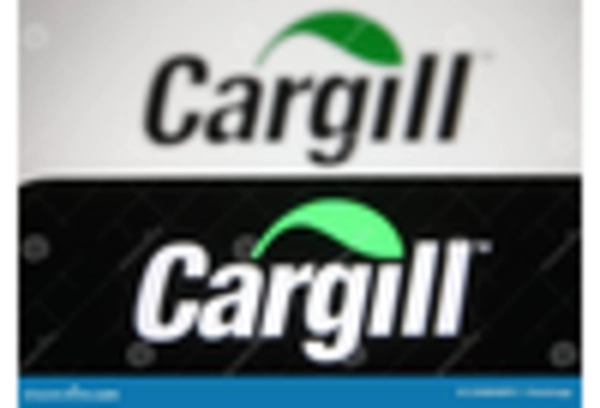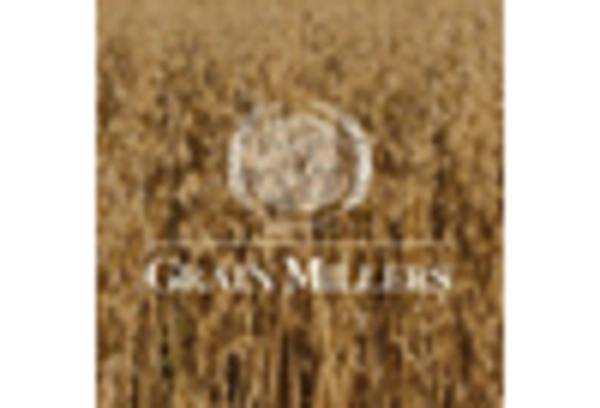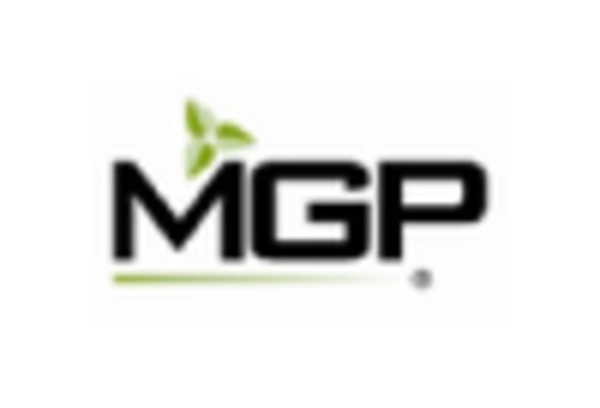Expansion of Retail Channels
The expansion of retail channels is playing a crucial role in shaping the corn flour market. With the rise of specialty grocery stores and online platforms, consumers now have greater access to a variety of corn flour products. This increased accessibility is likely to drive sales, as consumers are more inclined to purchase corn flour when it is readily available. Additionally, the growth of e-commerce has enabled manufacturers to reach a broader audience, facilitating the introduction of innovative corn flour products. Market data indicates that online sales of food products have surged by approximately 25% in recent years, suggesting that the corn flour market could see substantial growth as retailers continue to expand their offerings.
Health Consciousness Among Consumers
The increasing awareness of health and nutrition among consumers appears to be a pivotal driver for the corn flour market. As individuals seek healthier alternatives to traditional wheat flour, corn flour, which is gluten-free and rich in essential nutrients, gains traction. This shift in consumer behavior is reflected in market data, indicating that the demand for gluten-free products has surged by approximately 30% in recent years. The corn flour market is likely to benefit from this trend, as more consumers incorporate corn flour into their diets for its perceived health benefits. Additionally, the rise of health-focused diets, such as paleo and keto, further propels the demand for corn flour, suggesting a sustained growth trajectory for the industry.
Rising Popularity of Ethnic Cuisines
The growing interest in ethnic cuisines is emerging as a significant driver for the corn flour market. As consumers become more adventurous in their culinary choices, the demand for traditional dishes that utilize corn flour, such as tortillas and arepas, is on the rise. This trend is particularly evident in urban areas, where diverse populations contribute to a rich tapestry of food preferences. Market data suggests that the sales of corn flour products have increased by approximately 15% in regions with high ethnic diversity. Consequently, the corn flour market is likely to expand as food manufacturers and restaurants capitalize on this trend, introducing new products that cater to the evolving tastes of consumers.
Innovations in Food Processing Technology
Advancements in food processing technology are transforming the corn flour market. Innovations such as improved milling techniques and enhanced preservation methods are enabling manufacturers to produce higher quality corn flour with better shelf life and nutritional value. For instance, the introduction of cold milling processes has been shown to retain more nutrients compared to traditional methods. This technological evolution not only enhances product quality but also expands the range of applications for corn flour in various food products, from baked goods to snacks. As a result, the market is likely to witness an increase in product offerings, catering to diverse consumer preferences and potentially boosting overall sales in the corn flour market.
Increased Focus on Sustainable Agriculture
The corn flour market is experiencing a shift towards sustainable agricultural practices, driven by both consumer demand and regulatory pressures. Farmers are increasingly adopting eco-friendly methods, such as crop rotation and organic farming, to produce corn. This focus on sustainability not only appeals to environmentally conscious consumers but also aligns with government initiatives aimed at promoting sustainable food systems. As a result, the availability of organic corn flour is likely to increase, catering to a niche market that prioritizes sustainability. This trend may enhance the overall growth of the corn flour market, as consumers are willing to pay a premium for products that align with their values.


